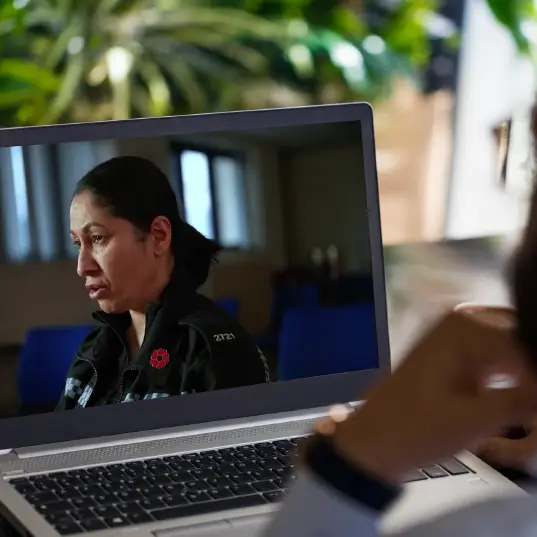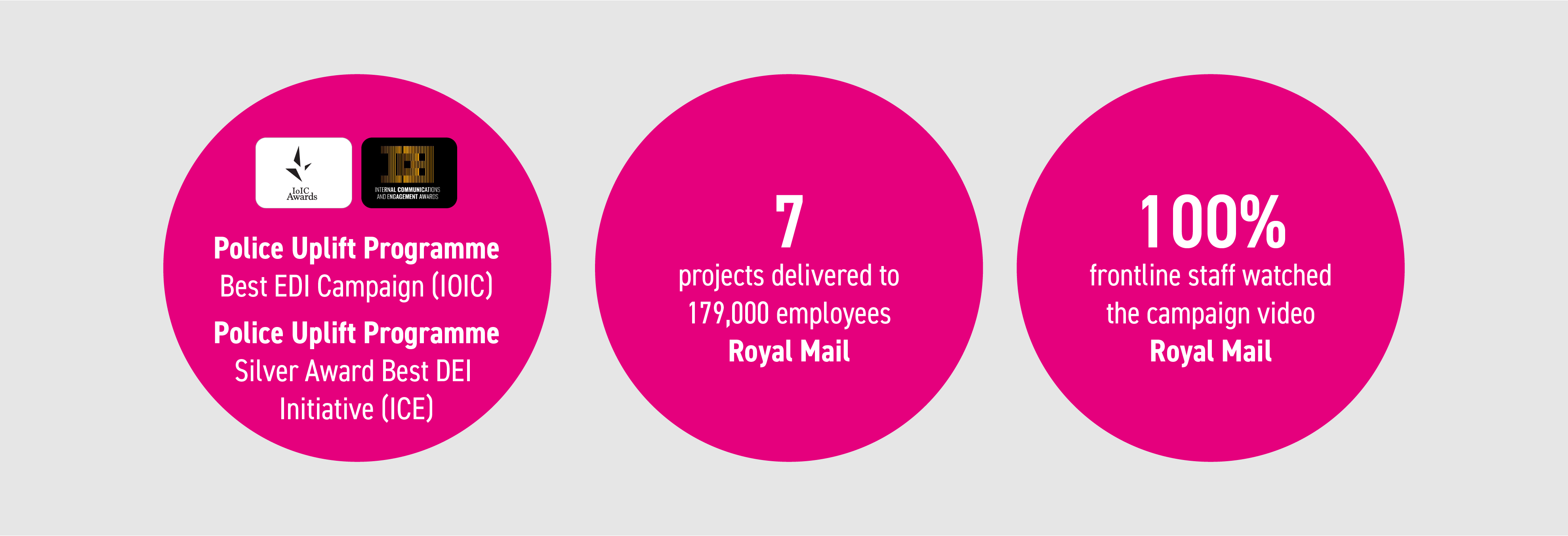

Diversity, Equity and Inclusion in the Workplace
A strong position on diversity, equity and inclusion (DEI) underpins a positive culture and increasingly, the single biggest cultural challenge organisations face is the extent to which they offer pathways, support, and advocacy for minority groups.
To that end, with more than 20 years’ experience as an employee engagement agency delivering impactful DEI strategy and communications for organisations such as the Royal Mail, Cisco and the UK Police, we know that diversity, equity, and inclusion represent different issues. The former is a question of representation – what your organisation looks like. The latter two, the extent to which people of minority groups will flourish and thrive.
As part of your Employee Value Proposition (EVP), your approach to DEI should be consistent. Our five step methodology to address DEI ensures you are best placed to make this happen.
If you’re struggling with effective DEI messaging which cuts through your other communications reaching hard-to-reach and ‘off-grid’ audiences or measuring the perception of your diversity and inclusion communications – that’s where we come in.

Measuring DEI and Cultural Maturity
While increasing diversity is largely a recruitment issue, equity and inclusion focus on the structure of an organisation, the degree of respect, integration and consideration people of minority groups are shown, and the normalised behaviours and attitudes.
It’s here that we can really help as a DEI agency – using company-wide diagnostics to review the cultural maturity of your organisation, to impactful employee change campaigns focussed on the levels of awareness, attitudes, and behaviour of your people, we can help move the dial on the level of inclusivity on display in your organisation.
The net result of this work is not only a healthier and more constructive place of work, but also one that will find the issue of diversity easier to address, as new recruits from minoritized groups are more likely to stay and thrive.
We’ll work closely with your team, in a partnering capacity, using our tried and tested methods for DEI strategy and communications, which will take you to the next level.

“The campaign cuts across normal police comms with a clear narrative and creatives. The addition of the film and quiz made a real impact.”
project lead, POLICE UPLIFT PROGRAMME
Talk to our team of specialists today
DEI Resources: FAQs, Case Studies and Insight
Frequently Asked Questions
When a workplace implements programmes, strategies, policies and practices to create a diverse, equitable and inclusive environment, employees are more likely to stay as they feel respected, valued, connected and have a sense of belonging.
A diverse workforce means a broad range of expertise and experience, which reflects the market and aids decision making. It also provides rich ground for innovation and productivity – all of which positively affect a business’ bottom line.
A DEI framework is a structured approach that an organisation uses to shape its internal structures, programmes and policies to create a diverse, equitable and inclusive culture. A well-embedded DEI framework will lead to a workplace environment where every employee feels they belong, is empowered to contribute and has equal access to opportunities and resources. Some examples of how the framework might be applied are:
- Setting targets for diverse leadership and recruiting and promoting people from underrepresented groups / with protected characteristics.
- Encouraging the formation of Employee Resource Groups (ERGs) – see our question below to learn more about these.
- Mandating learning on topics such as unconscious bias and microaggressions.
- Implementing policies that focus on accessibility and fairness of access to resources and opportunities.
There has been a change in the emphasis and prioritisation of equity in the workplace, with many viewing this as the first step that needs to be addressed to enable efforts to promote diversity and inclusion to succeed.
This means some organisations choose to re-order the DEI acronym to EDI, to demonstrate that the ‘E’ – equity, is at the forefront of their strategy. It communicates that their approach will focus first on the principle of fairness and ensuring employees have equal opportunities, with the belief this lays a better foundation on which diversity and inclusion can then thrive, and become the norm.
ERG is an acronym for Employee Resource Groups, sometimes known as employee networks, or colleague groups set up within an organisation. These are mainly voluntary and employee-led and bring together people who share interests, characteristics and identities.
Commonly, groups focus on race and ethnicity, gender, sexual orientation, neurodiversity, disability status, age, parenting or caring responsibilities. However, they are not limited to these categories, with many organisations encouraging ERGs to consider and embrace intersectionality – the connectedness of various aspects of identity.
Organisations monitor the effectiveness of their diversity, equity, and inclusion (DEI) strategy over time by using a structured method to evaluate how well the strategy is integrated into their operations and culture.
There are progressive stages of DEI maturity ranging from awareness, through to full integration in an organisation. These stages are standardised in models which can be used to help benchmark and gauge the current status, and provide guidance on how to reach the next level of maturity by identifying areas for improvement.






